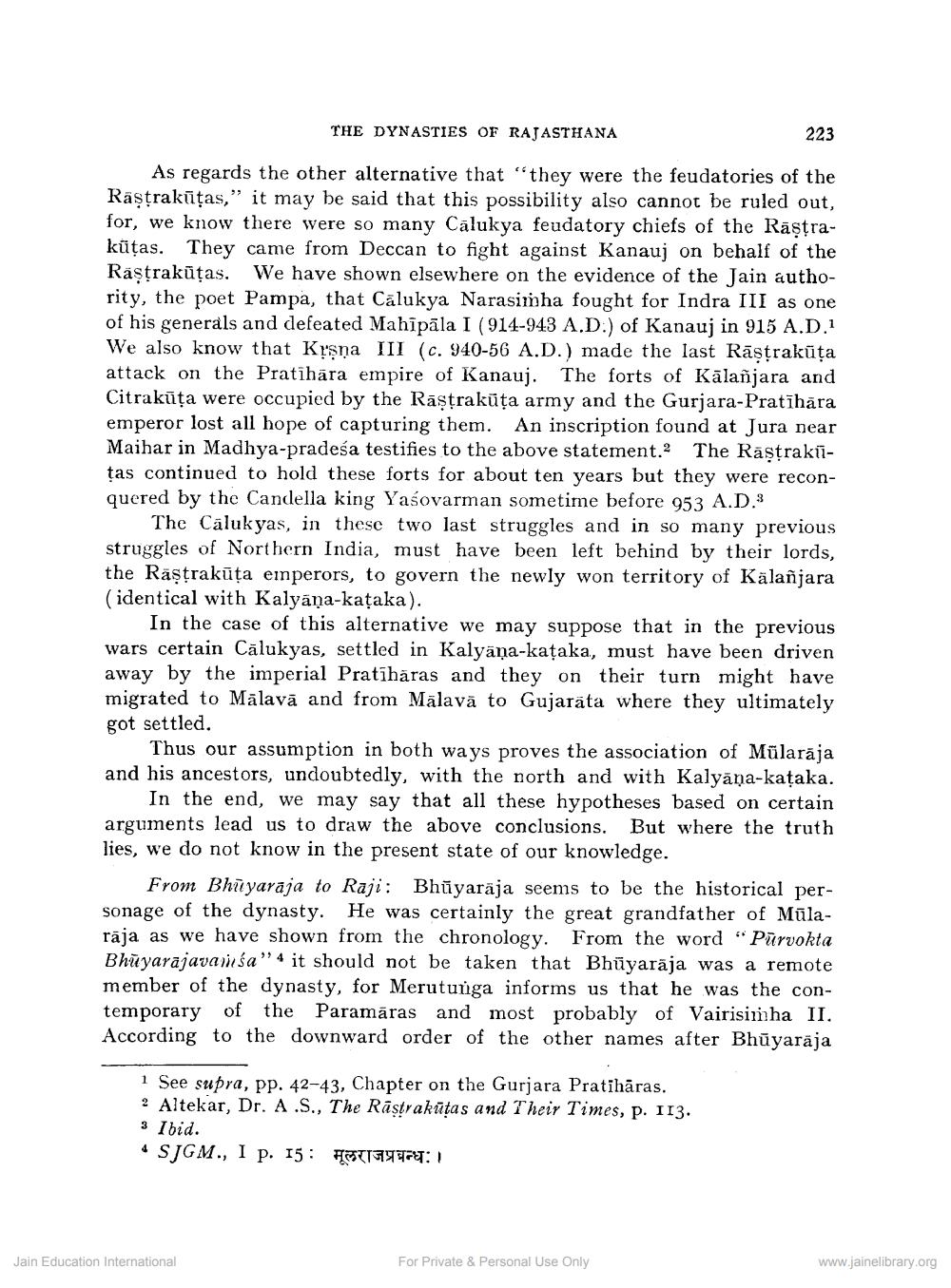________________
THE DYNASTIES OF RAJASTHANA
223
As regards the other alternative that "they were the feudatories of the Rāştrakūtas," it may be said that this possibility also cannot be ruled out, for, we know there were so many Calukya feudatory chiefs of the Rāstrakūtas. They came from Deccan to fight against Kanauj on behalf of the Rastrakūtas. We have shown elsewhere on the evidence of the Jain authority, the poet Pampa, that Cālukya Narasimha fought for Indra III as one of his generals and defeated Mahīpāla I (914-943 A.D.) of Kanauj in 915 A.D.1 We also know that Krsņa III (c. 940-56 A.D.) made the last Rāstrakūta attack on the Pratīhāra empire of Kanauj. The forts of Kālañjara and Citrakūța were occupied by the Rāştrakūta army and the Gurjara-Pratīhāra emperor lost all hope of capturing them. An inscription found at Jura near Maihar in Madhya-pradeśa testifies to the above statement. The Rāştrakūtas continued to hold these forts for about ten years but they were reconquered by the Candella king Yašovarman sometime before 953 A.D.3
The Cäluk yas, in these two last struggles and in so many previous struggles of Northern India, must have been left behind by their lords, the Rāştrakūta emperors, to govern the newly won territory of Kälañjara (identical with Kalyāņa-kataka).
In the case of this alternative we may suppose that in the previous wars certain Cālukyas, settled in Kalyāņa-kațaka, must have been driven away by the imperial Pratīhāras and they on their turn might have migrated to Malavā and from Malavā to Gujarata where they ultimately got settled.
Thus our assumption in both ways proves the association of Mülarāja and his ancestors, undoubtedly, with the north and with Kalyāņa-kațaka.
In the end, we may say that all these hypotheses based on certain arguments lead us to draw the above conclusions. But where the truth lies, we do not know in the present state of our knowledge.
From Bhūyaraja to Raji: Bhūyaraja seems to be the historical personage of the dynasty. He was certainly the great grandfather of Mūlarāja as we have shown from the chronology. From the word “Pūrvokta Bhūyarajavainsa” 4 it should not be taken that Bhūyarāja was a remote member of the dynasty, for Merutunga informs us that he was the contemporary of the Paramāras and most probably of Vairisimha II. According to the downward order of the other names after Bhūyarāja
1 See supra, pp. 42-43, Chapter on the Gurjara Pratihāras. 2 Altekar, Dr. A.S., The Rāstrakūtas and Their Times, p. 113. 3 Ibid. • SJGM., I P. 15: H15994:
Jain Education International
For Private & Personal Use Only
www.jainelibrary.org




